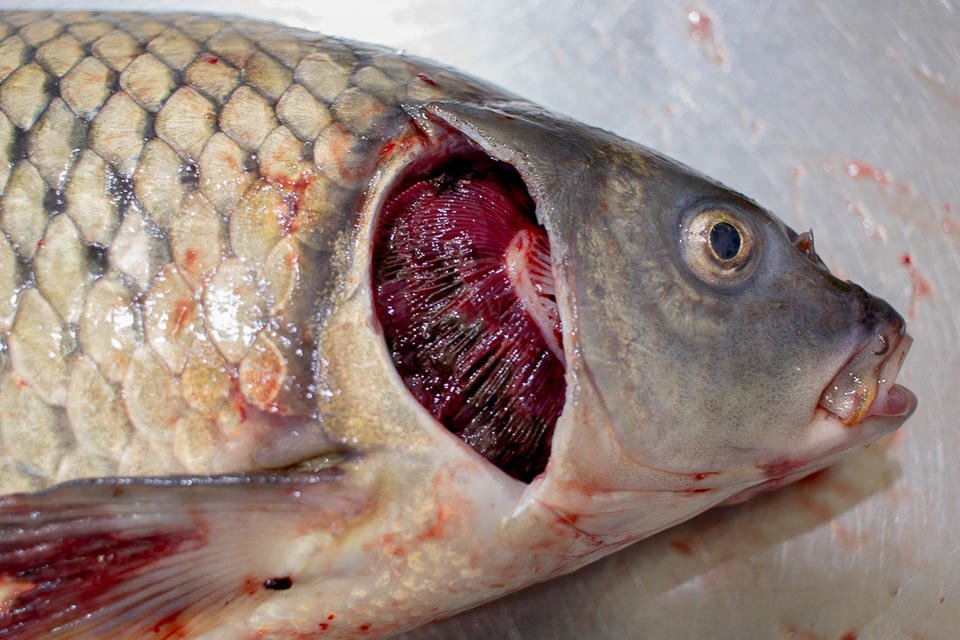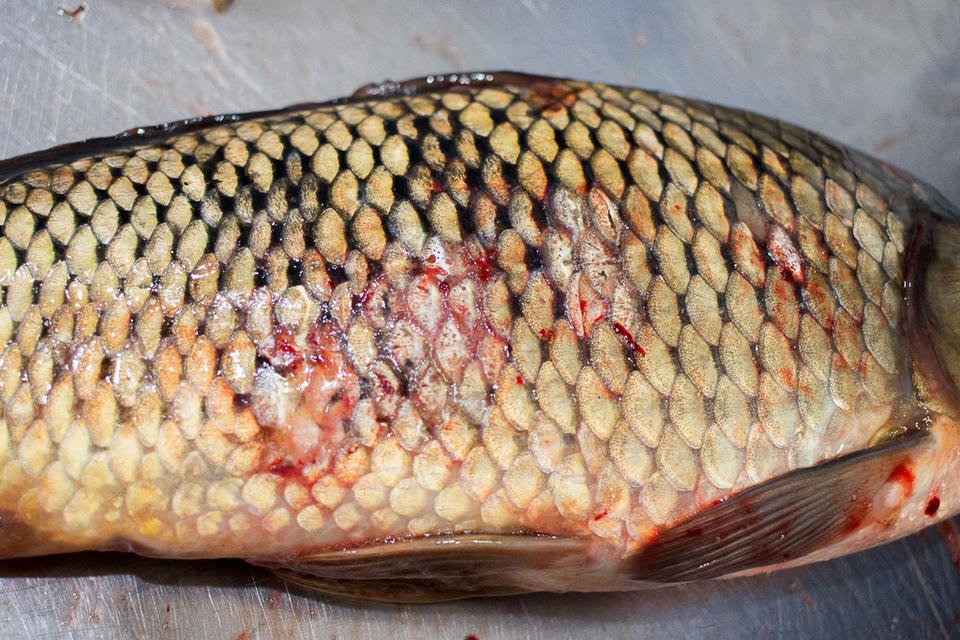Cyprinid Herpes Virus-3 (CyHV-3)
Koi Herpes Virus (KHV) is a DNA virus that causes a highly contagious acute disease exclusively in common carp (Cyprinus carpio) and its ornamental variety, koi carp. KHV has never been associated with disease in any other species. More about KHV.
Research
Exploring whether native pathogens can be used to control AIS
This project is working to identify and evaluate a safe and effective pathogenic biocontrol agent for carp.
Led by Dr. Nicholas Phelps
Report Fish Kills
If you see a fish kill — a localized, mass die-off of fish — you should report it to the State Duty Officer first (24/7 Dispatch: 800-422-0798). Then, report it to our researchers using this online form.
Be sure to note the location of the event, details about the weather, the types of fish that were affected, as well as anything unusual about the scene such as an odd smell or a sheen or algae bloom on the water. Please do not clean up or try to collect dead fish as they may carry bacteria or toxins.
Reporting a fish kill sparks a fast and standardized response. MAISRC partners with the Minnesota DNR to investigate fish kills. Together, we’ll identify what caused the event and communicate with fisheries managers and the public. Fish kill events in Minnesota are widespread, and may provide clues about KHV and other ecosystem issues. Reporting these fish kill events is an easy and effective way to do your part to help protect Minnesota waters. The user-friendly database is available online. It simply asks for the date, the location of the fish kill, and other basic information of any fish kill you observe. Once reported, fish kills are triaged and, if appropriate, trained biologists and students will collect samples to diagnose the cause of mortality. Do your part to protect our waters by reporting fish kill events that you see.
About KHV
Description
The signs of KHV are non-specific but may produce white or gray lesions on the gills, hemorrhage on the skin, and the eyes of infected fish may appear sunken. Mortality can be very rapid when outbreaks of KHV occur in wild or cultured fish, often within 24 to 48 hours after symptoms begin. More severe outbreaks of KHV are observed from late June to early August in Minnesota when water temperatures reach 21 - 25°C (70 - 76°F).
Distribution
KHV was first detected in a mass mortality of common carp following initial outbreaks between 1996 and 1998 in Germany, the United Kingdom and Isreal. The virus has since been detected in 33 countries around the world, including the United States. Koi Herpes Virus is thought to have originated from a benign common carp virus that increased in virulence in the environment of intensive aquaculture. KHV was first detected inMinnesota in 2009 in a backyard koi pond, and in 2017 in wild common carp.
Does KHV kill all fish when it causes an outbreak in a lake?
Although KHV has the potential to cause high mortality in wild and cultured common carp, actual mortality rates are highly variable. Disease progression depends on water temperature, density of fish, viral concentrations, prior exposure and condition of exposed fish.
Does KHV affect native species of fish?
Disease caused by KHV is limited to common carp and koi. However, goldfish have been shown to be potential asymptomatic carriers. Extensive disease trials, in-vitro studies, and field observations have shown that KHV is highly species-specific and cannot infect species native to Minnesota.
How did KHV get into lakes in Minnesota, and why are we seeing it now
Koi Herpes Virus was likely introduced to wild populations around the world, including in Minnesota, from ornamental koi that had been previously exposed and carried the virus. It is possible that the 2017-2018 KHV outbreaks observed in southern Minnesota are the result of a recent introduction and rapid spread of KHV. However, it is also possible that given historically limited investigation of fish kills, the virus went undiagnosed for years prior to recent surveillance.


